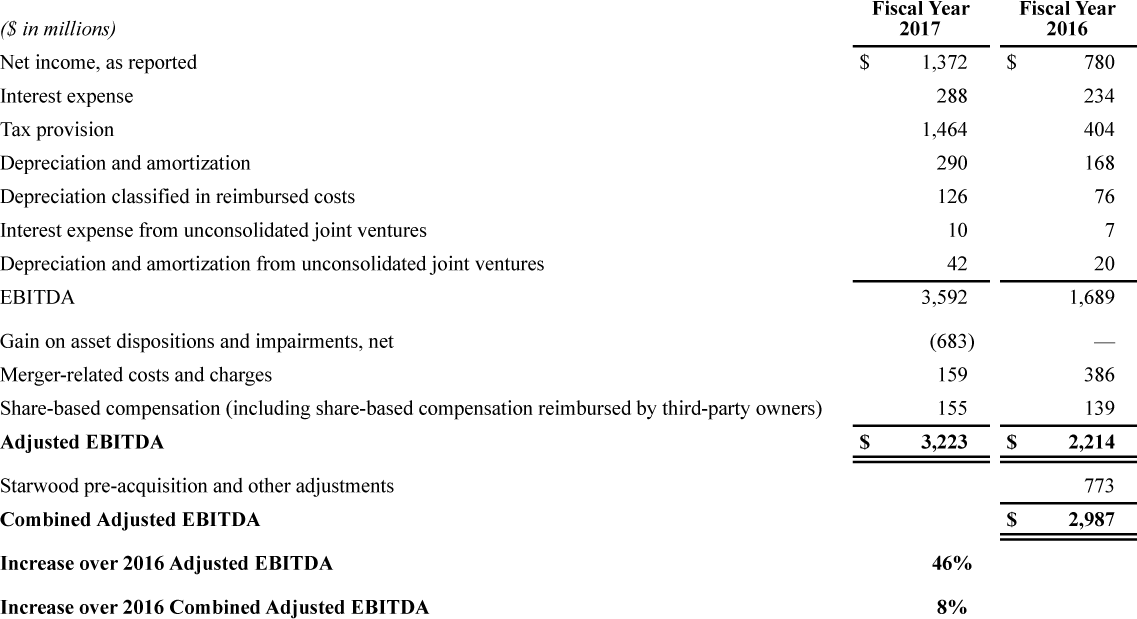Financial Information
Jump to a Section:
NON-GAAP FINANCIAL MEASURES
NON-GAAP FINANCIAL MEASURES
In this annual report, we report certain financial measures that are not required by, or presented in accordance with, United States generally accepted accounting principles (“GAAP”). Although management evaluates and presents these non-GAAP measures for the reasons described below, please be aware that these non-GAAP measures have limitations and should not be considered in isolation or as a substitute for operating income, income from continuing operations, net income or any other comparable operating measure prescribed by GAAP. In addition, we may calculate and/or present these non-GAAP financial measures differently than measures with the same or similar names that other companies report, and as a result, the non-GAAP measures we report may not be comparable to those reported by others.
Earnings Before Interest Expense, Taxes, Depreciation and Amortization (“EBITDA”), Adjusted EBITDA, and Combined Adjusted EBITDA. EBITDA reflects net income, excluding the impact of interest expense, depreciation, amortization, and provision for income taxes. Our non-GAAP measure of Adjusted EBITDA further adjusts EBITDA to exclude the pre-tax transaction and transition costs associated with the Starwood merger, which we recorded in the “Merger-related costs and charges” caption of our Consolidated Statements of Income (our “Income Statements”), gains and losses on asset dispositions, including the gain on the sale of our ownership interest in Avendra, and share-based compensation expense for all periods presented.
Our 2016 non-GAAP measure of Combined Adjusted EBITDA also includes Starwood pre-acquisition and other adjustments, which assume Marriott’s acquisition of Starwood and Starwood’s sale of its timeshare business, as if these two transactions (the “Transactions”) had been completed on January 1, 2015. These adjustments reflect Starwood’s EBITDA, adjusted for merger- related costs and charges, net loss on asset dispositions, loss on cumulative translation adjustment, share-based compensation, and an assumed effective income tax rate for the combined company of 32.5% for the periods prior to September 23, 2016, the closing date of the acquisition.
Marriott presents Combined Adjusted EBITDA for informational purposes only and the combined financial information is not necessarily indicative of what the combined company’s results of operations would have been had the Transactions been completed on the date indicated. We believe that Adjusted EBITDA and Combined Adjusted EBITDA are meaningful indicators of our operating performance because they permit period-over-period comparisons of our ongoing core operations before these items and facilitate our comparison of results before these items with results from other lodging companies. We use such measures to evaluate companies because they exclude certain items that can vary widely across different industries or among companies within the same industry. For example, interest expense can be dependent on a company’s capital structure, debt levels, and credit ratings. Accordingly, the impact of interest expense on earnings can vary significantly among companies. The tax positions of companies can also vary because of their differing abilities to take advantage of tax benefits and because of the tax policies of the jurisdictions in which they operate. As a result, effective tax rates and provisions for income taxes can vary considerably among companies. Our Adjusted EBITDA and Combined Adjusted EBITDA also exclude depreciation and amortization expense which we report under “Depreciation, amortization, and other” as well as depreciation included under “Reimbursed costs” in our Income Statements, because companies utilize productive assets of different ages and use different methods of both acquiring and depreciating productive assets. These differences can result in considerable variability in the relative costs of productive assets and the depreciation and amortization expense among companies. We also exclude share-based compensation expense in all periods presented to address the considerable variability among companies in recording compensation expense because companies use share-based payment awards differently, both in the type and quantity of awards granted.
We reconcile these non-GAAP measures with net income in the following table:
